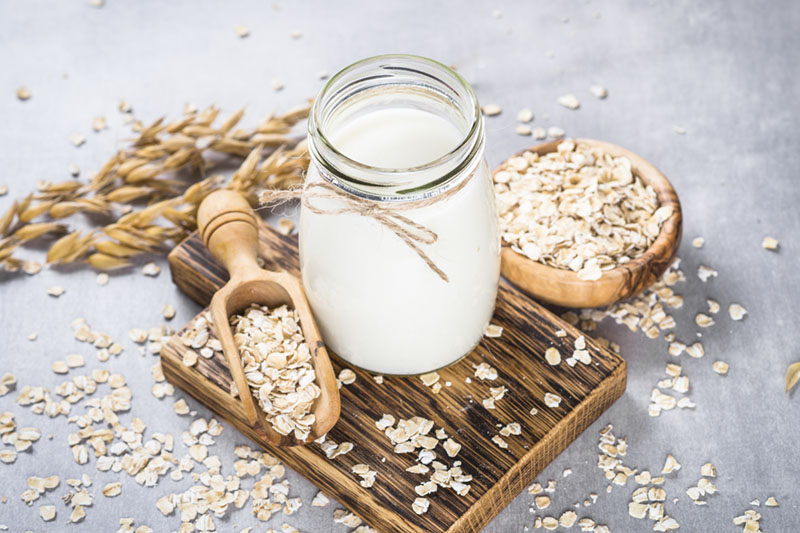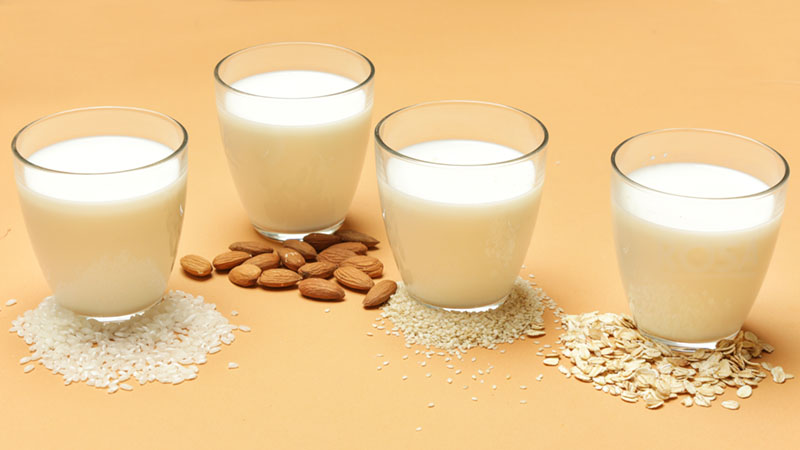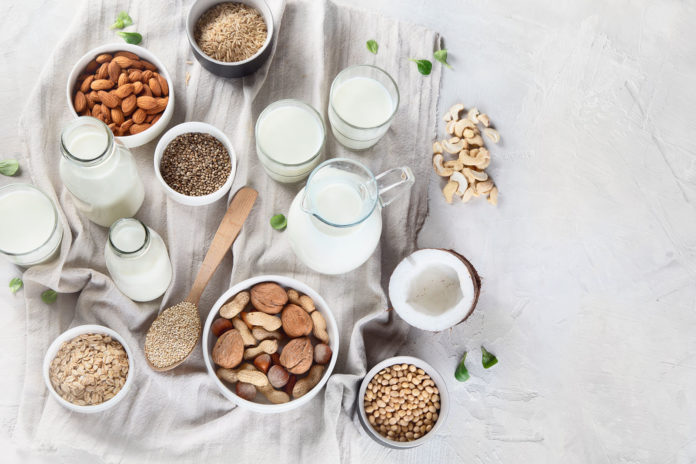Are you looking for the most sustainable milk alternative? You’ve come to the right place!
Non-dairy milk alternatives are on the rise, and for good reason. Not only are they the more ethical and healthier option, but in almost all instances they have a considerably lower carbon footprint than dairy milk.
For example, one glass of dairy milk produces almost 3x more greenhouse gas than any plant-based milk and requires 9x more land use (Poore, Nemecek, 2018)!
And because we’re always looking for more sustainable options for day to day life, we knew it would be helpful to highlight the most sustainable non-dairy milks, along with information about their environmental impacts, since not all milk alternatives are created equal.
The top 4 most sustainable milk alternatives:
1. Oat Milk
Oat milk is one of the lowest water-intensive plant-based milks, producing fewer greenhouse gases, requiring much less land use than dairy milk, and only requiring one-eighth of the amount of water that almond milk requires.
Oats are also grown in cooler climates such as the northern US and Canada, and are therefore not associated with deforestation in developing countries (Poore, Nemecek, 2018).
Oat milk happens to also be my favorite milk alternative, not only for the lower carbon footprint, but for the dairy-like flavor. Oat milk tastes almost spot-on to cow’s milk and also makes an amazing latte. The first time I had an oat milk latte, I could barely tell the difference with how creamy and “milky” it was. If you haven’t jumped on the oat milk bandwagon yet, I highly recommend you give it a try.


2. Pea Milk
Pea milk is not only higher in protein than most other non-dairy milks, with 8 grams of protein per cup (comparable to cow’s milk), but it also has a much lower carbon footprint.
According to Inhabitat, “peas can often grow without irrigation and are easily rotated by farmers, naturally fixing nitrogen in soil and reducing the need for artificial fertilizers. Growing peas requires up to six times less water than almonds.”
Pea milk is also one of my top picks for its creaminess and similarity to dairy, with the high protein content being a huge plus.
3. Soy Milk
Soy milk is a great option not largely due to it’s minimal water use compared to other non-dairy milks. It takes 297 liters of water to produce 1 liter of soy milk, equating to 28% of the amount of water used for dairy production (1MillionWomen).
Soy milk also packs the most protein of all of the plant-based milks, with 7 grams of protein per cup vs. dairy milk’s 8 grams of protein per cup (Mayo Clinic).
Soy milk has a bad rap due to it’s estrogenic properties, but studies suggest that “soy has either a beneficial or neutral effect on various health conditions [and is a] nutrient-dense source of protein that can safely be consumed several times a week, and is likely to provide health benefits” (Harvard School of Public Health).
To avoid buying soy milk made from rain forest-clearing soy farms in the Amazon (used for livestock feed), choose organic soy milks made from soybeans grown in the U.S. or Canada.
4. Hemp Milk
Hemp milk, made from whole hemp seeds, is another great option if you’re looking for a low-water usage non-dairy milk. Hemp is a very sturdy plant that grows naturally without the use of herbicides or pesticides and with very little water. Per Good Hemp, hemp also breathes in 4 times more CO2 than trees, and nothing is wasted when producing food and drink from hemp plants.
And according to Nutrition.org, hemp is one of few plant-based complete proteins since it contains all of the essential amino acids and is also rich in omega-3 fatty acids.
What About Almond Milk?
Unfortunately, almond milk has the highest carbon footprint of any of the non-dairy milks.
It takes approximately 371 liters of water to produce one liter of almond milk. Even so, almond milk still requires about half the amount of water vs. cow’s milk and does not have the methane-production problem that cows do.
If you’re sticking with almond milk, be sure to buy organic. The common use of fungicides and pesticides for almond production is proving deadly for many of the 1.5 million bee colonies brought in to pollinate almond trees (Science Daily).
Whatever Non-Dairy Milk You Pick, You’re Doing the Earth a Favor


I hope this gives you a better idea of the most sustainable milk alternatives. And while some listed have more of an environmental impact than others, I do want to point out that any non-dairy milk you choose will be better for the earth than dairy milk.
So once you find your favorite, give yourself a pat on the back for choosing a more sustainable option. And keeping with our “small changes” theme, don’t beat yourself up if you still choose to buy dairy products from time to time.
Small changes like ordering a plant-based latte from time to time, or using non-dairy milk in your cereal or smoothies still makes a difference, for the planet and your health. Cheers!














